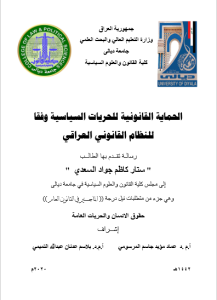Abstract
Machine learning today is widespread and probably can be used many time a day, without even realizing. So several scholars believe that machine learning is the best way to advance Artificial intelligence)AI), and machine learning systems must-have qualities of proficiency, especially with the huge amount of data that imposes limitations on the functioning of machine learning systems for achieving the purpose of using it.
This thesis Enhancement of Intrusion Detection in NSL-KDD Dataset using some machine learning techniques investigates intrusion detection implementation on the NSL-KDD dataset, Which is considered as the most important type of intrusion detection data. The proposed system includes three main steps, pre-process (encoded data, normalization), the dimension reduction using two technique Principal Component Analysis (PCA), Linear Discriminant Analysis (LDA) and classification using Naive Bayesian (NB), Decision Tree (J48), The classification step divides the data into two sections (the training section include 70% of all the data and test section include 30% of all the data), then compare results of classification accuracy and effect of the proposed system steps.
The results of the comparison between the related techniques and algorithms based on the accuracy rate shown the proposed system is succeeded in achieving high accuracy of 99.72% of using normalization step, dimensional reduction technology PCA with 25 eigenvectors, and a j48 classifier. Classification accuracy is achieved 99.291% using the normalization step, dimensional reduction technology PCA with 5 eigenvectors, and a j48 classifier. This confirms a large data shortcut that guarantees efficient operation, non-degradation of the system, and high classification accuracy.




